Nong Khai to Vientiane (Khamsavath) by Train
This is a review of the international train between Nong Khai and Vientiane (Khamsavath). Thai immigration is done at Nong Khai Station and Laos immigration is done at Vientiane (Khamsavath) Station. This is part of my Singapore to Beijing train trip.
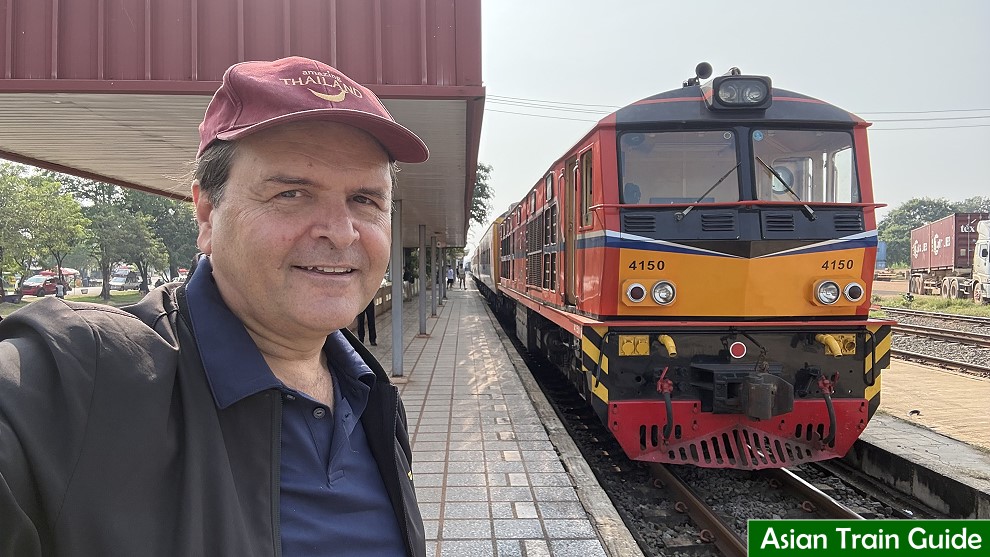
🇹🇭 🇱🇦 TRAIN 8: Nong Khai to Vientiane (Khamsavath)
🚂 Rapid No. 133
🗓️ Date of Travel: 10th October 2024
⏰ Departure: 08:35 | Arrival: 09:05
⏱️ Duration: 30 minutes
📏 Distance: 12.5 km (map of route)
🎟️ Ticket: 70 baht (3rd Class)
QUICK LINKS: TRAIN 1 | TRAIN 2 | TRAIN 3 | TRAIN 4 | TRAIN 5 | TRAIN 6 | TRAIN 7 | TRAIN 8 | TRAIN 9 | TRAIN 10
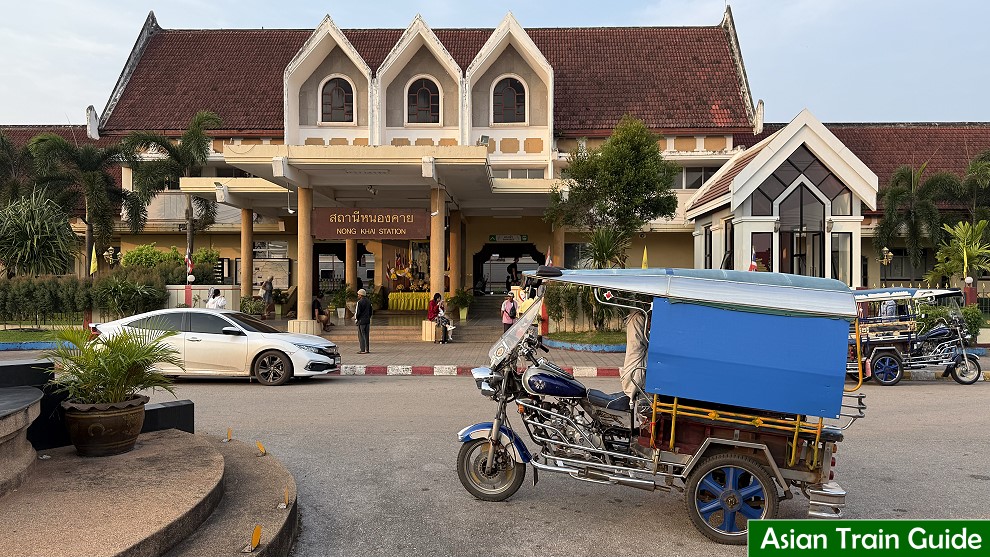
The real international train from Bangkok to Vientiane is Rapid No. 133. However, I decided to take the more comfortable Special Express No. 25 a little earlier. This gave me time to have breakfast at the food shop opposite Nong Khai station. I considered taking a shower at the station for 10 baht, but in the end, I decided to wait until I checked in at my hotel in Vientiane. Coming earlier also helped me avoid the long queues at Immigration when the No. 133 international train arrives from Bangkok.
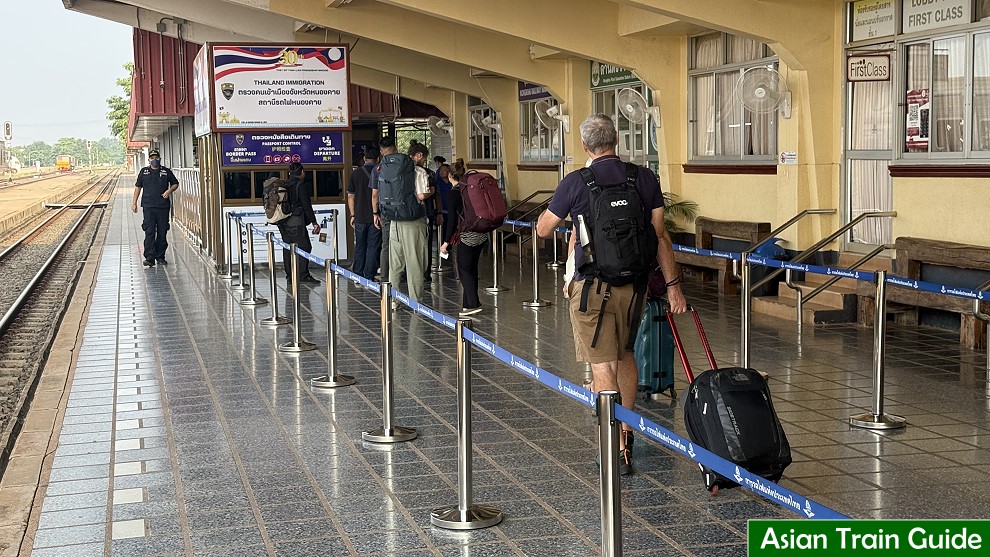
Thai Immigration at Nong Khai Station is at the northern end of the platform and opens at 8:00 a.m., when the Bangkok train is due to arrive. On the day I travelled, the train was 30 minutes late. This allowed passengers boarding at Nong Khai to go through immigration first. If the No. 133 train is late, I would advise you not to rush. After completing Immigration, you have to wait in a small holding area with limited seating. It’s best to wait for the train to arrive from Bangkok and then head to Immigration before the passengers disembark.
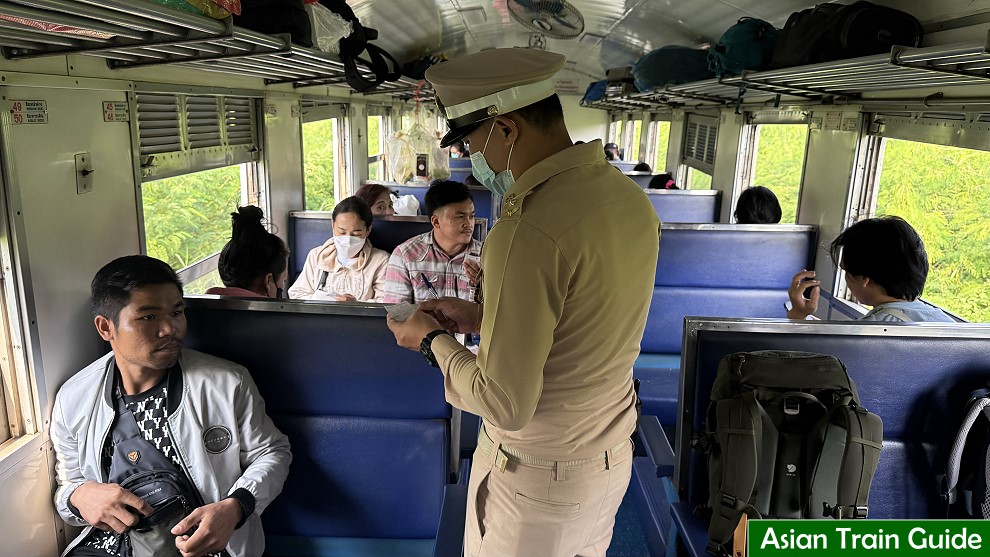
If you’re on the No. 133 train from Bangkok, you can leave your luggage on board and disembark at Nong Khai Station to go through Immigration. I recommend walking towards the front of the train as it approaches Nong Khai so you can be at the front of the queue, making the process quicker.
In total, there were just under 150 passengers crossing the border. Everyone passed through Immigration within 25 minutes. Don’t worry, the train won’t leave until the last person has finished. We departed at 9:00 a.m., 25 minutes later than the scheduled time of 8:35 a.m. The journey to Vientiane (Khamsavath) Station takes just 30 minutes.
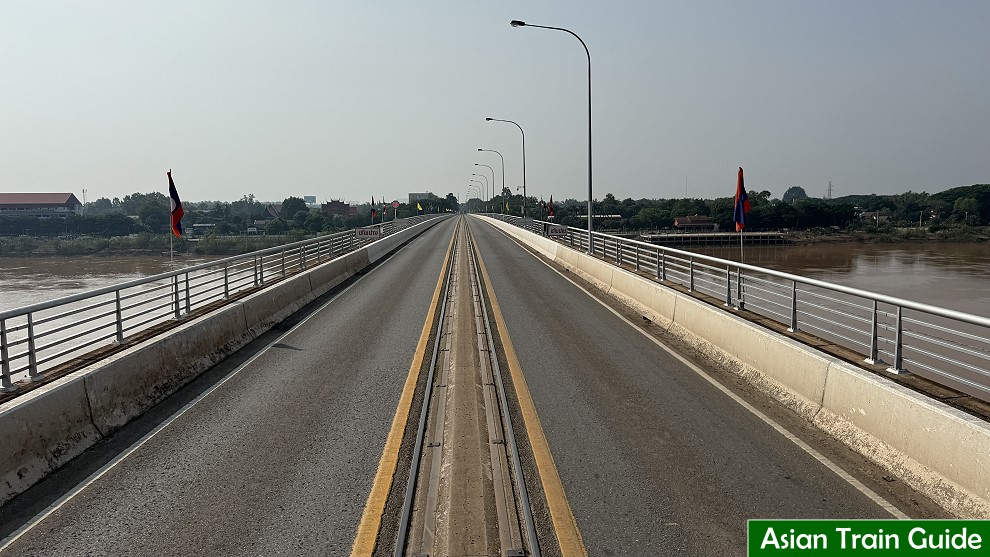
As soon as we left Nong Khai station, they blocked the traffic from crossing the Friendship bridge to give us the right of way. At the halfway point, we entered Laos.
About 12 minutes later, we arrived at Thanaleng Station for a short stop. This used to be the terminal station in Laos, but passengers are no longer allowed to get off here. This is where they switch from Thai drivers to Lao drivers, though the Thai locomotive and carriages continue.
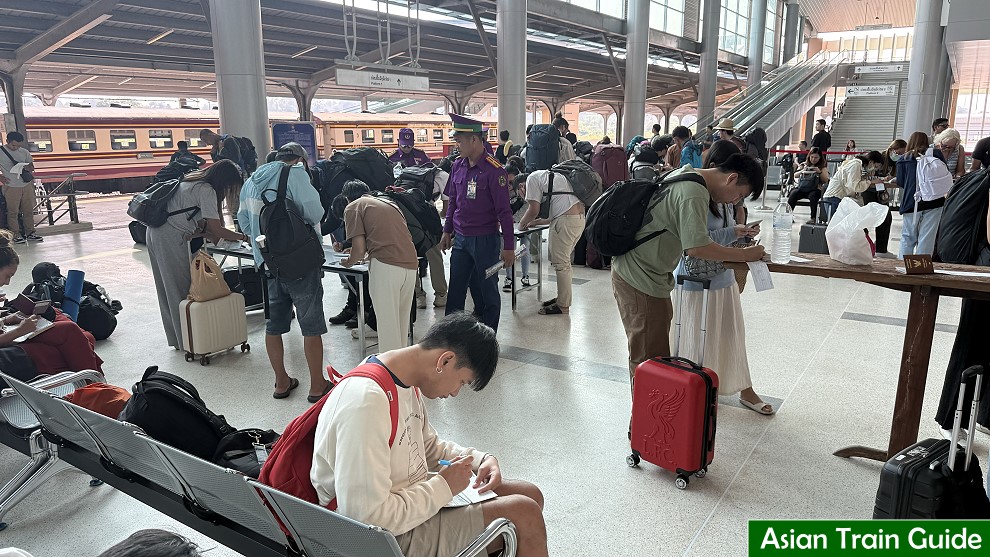
As you approach Vientiane (Khamsavath) Station, I suggest moving to the middle of the train to prepare for disembarkation. Upon arrival, someone was handing out arrival cards for Laos. It would have been more efficient to distribute these on the train, so there was a bit of a scramble to fill them out. There were tables for this, but only a few pens were available—so make sure you bring your own.
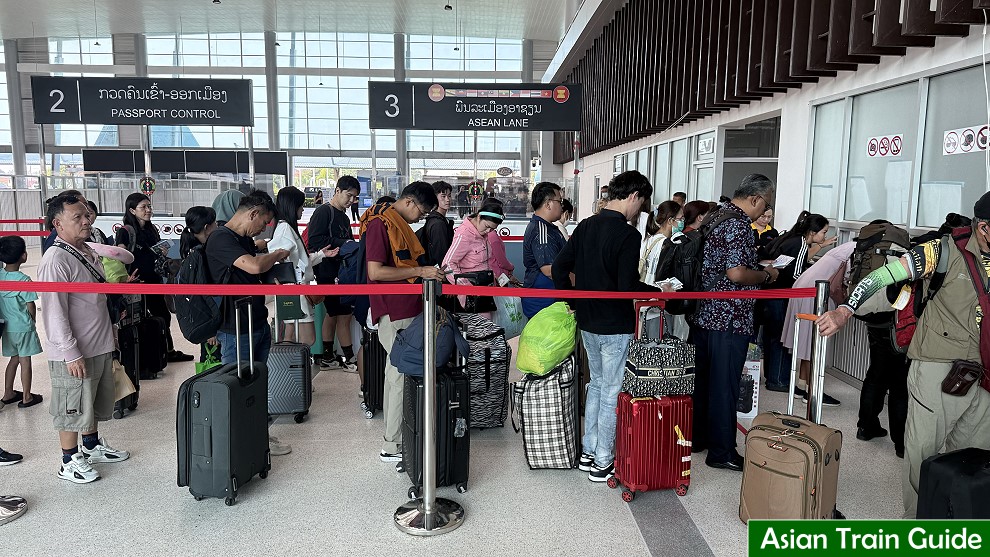
There are two different queues for Immigration: one for nationalities with visa exemption (mainly ASEAN countries and a few European countries—check in advance), and another for those who need a Visa on Arrival. As a British citizen, I needed a Visa on Arrival. It’s important to note that Vientiane (Khamsavath) Station is not on the list of entry points for using an e-visa. If you arrive with an e-visa, it is worthless. You’ll either need to return to Thailand and cross the Friendship Bridge by bus, or buy a Visa on Arrival.
There’s a separate form for the Visa on Arrival. A man was distributing these forms, so I filled it out along with the arrival card. You’ll need a passport photo too. The fee was $40, which I paid in crisp banknotes. You can also pay in Thai baht, but it will cost more.
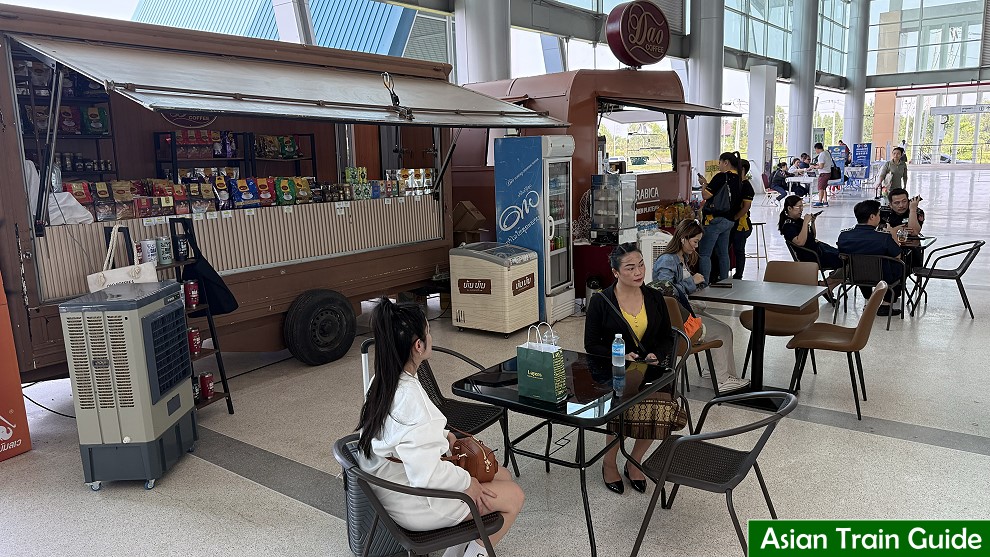
Vientiane (Khamsavath) Station now has two coffee shops, two booths for SIM cards, one table for the shuttle bus to the city and the Laos-China Railway (LCR) station, and several tables for taxis and tuk-tuk hire. The shuttle bus is the cheapest option. There is now a permanent foreign exchange booth, but the queues were long. Note that you can pay for the shuttle bus using Thai baht.
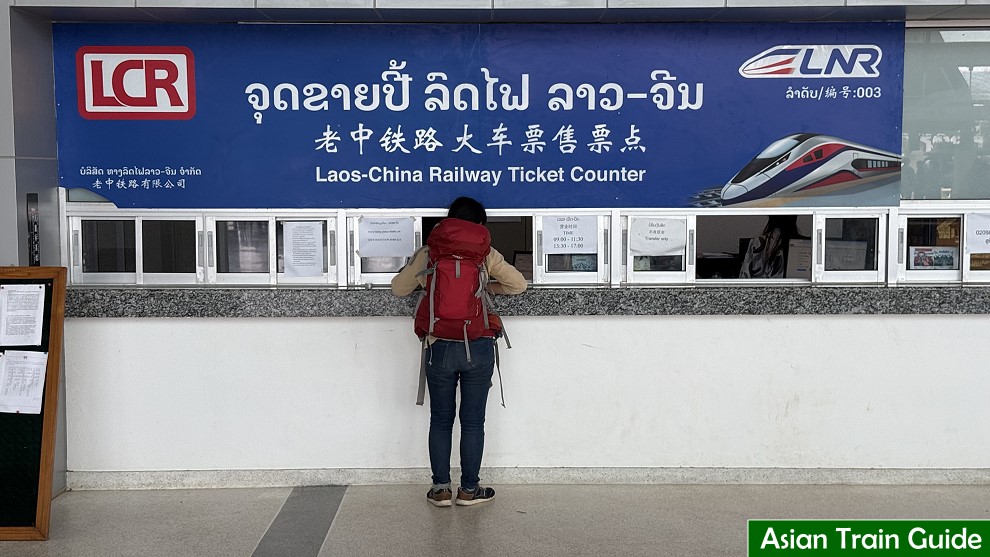
Another update is that you can now buy tickets for the Laos-China Railway (LCR) at this station. Previously, tickets could only be purchased through bank transfer, meaning only Lao residents could buy them. Now, you can pay with cash in either Thai baht or Lao kip, making it more convenient, as tickets are often available for same-day travel.
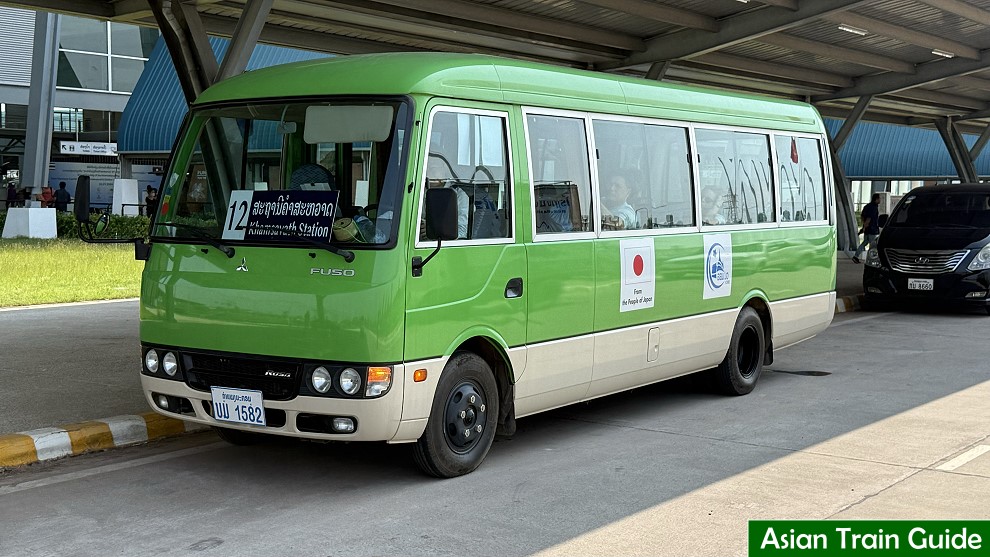
In the morning, there are three buses to the Central Bus Station in Vientiane (sometimes referred to as the Morning Market) at 10:10 a.m., 10:40 a.m., and 11:00 a.m. However, the last one was cancelled, and the next scheduled bus was at 1:30 p.m. Tickets cost 20,000 kip or 35 baht for the 30-minute journey. Most people should be able to catch the 10:10 a.m. bus.
As I had time before checking in at my hotel, I decided to take a side-trip. I caught the 11:45 a.m. bus to the LCR station which was about 30 minutes away. Once there, I had around 30 minutes before the bus departed, so I went to the ticket office to print my ticket for the train to Kunming. For international trains, you must print your ticket. For domestic trips, the QR code on your app is sufficient.
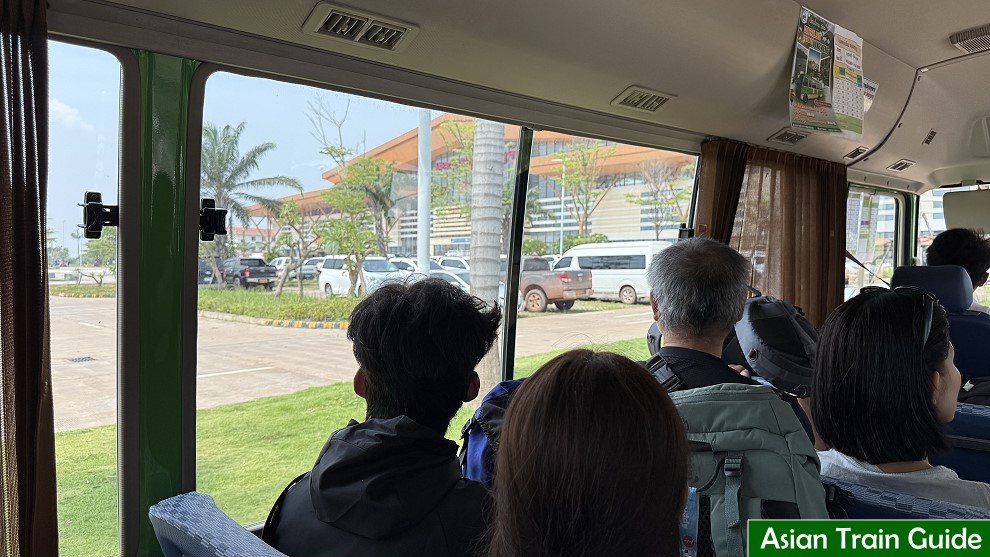
I then boarded the bus back to Vientiane, costing 30,000 kip. Departure was at 12:50 p.m. It first went to Vientiane (Khamsavath) Station, locally known as the Laos-Thai Station. This turned out to be the 1:30 p.m. departure from that station, and we then continued into town to the central bus station. My hotel was only a five-minute walk away. I’m staying at the Lanexang Princess Hotel, which is suitable for a short stay, as I’ll be catching the bus back to the LCR station at 6:10 a.m.
➡️ BUYING TICKETS:
🇹🇭 Thailand: DTicket
🇲🇾 Malaysia: KTMB
➡️ TRANSPORTATION TICKETS IN ASIA:
✅ 12GO Asia
✅ Trip Dot Com
✅ Baolau
QUICK LINKS: TRAIN 1 | TRAIN 2 | TRAIN 3 | TRAIN 4 | TRAIN 5 | TRAIN 6 | TRAIN 7 | TRAIN 8 | TRAIN 9 | TRAIN 10
